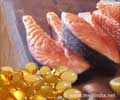- Shopping Lists - (http://www.healthyeating.org/healthy-eating/meals-recipes/shopping-lists.aspx)
- Healthy Food Shopping - (http://kidshealth.org/en/parents/food-shopping.html)
Grocery Shopping Tips for Healthy Eating
Healthy grocery shopping makes you eat healthy food and when combined with exercise and meditation, it contributes to the overall well-being.
Good nutrition and healthy meals form an integral part of the healthy food and choosing the grocery wisely help you to stick to your health regime better. One trick to help you choose healthy foods from the shelves is to eat before you go grocery shopping. This will prevent you from picking up unhealthy foods. Whole grains, skimmed dairy products, lean meat, nuts, fruits and vegetables form an integral part of a healthy meal.

Healthy grocery shopping rules involve reading food labels and choosing organic foods and avoiding frozen, junk and canned foods. It is important to read the list of ingredients and not just the nutrition facts. Food labels can also help check the freshness of the food. Food labels such as "low-fat", "organic", "no trans-fat" and others can be misleading.
A well-planned grocery list can keep the unwanted foods away. The following are some tips to choose healthy foods rather than "health foods" to keep yourself fit and healthy.
- Plan your menu for a week if possible and shop for groceries accordingly. Remember, eating healthy is not about counting calories or eating bland food. A healthy meal consists of all kinds of food components in optimum levels making the meals real, nourishing as well as delicious.
- Go for choosing a fruit for a day. Berries, apples, bananas, oranges, grapes, melons, and avocado make wholesome and nutritious snacks or meals by themselves. Choose seasonal fruits and fresh fruits over canned, tinned or preserved fruits.
- Vegetables like carrots, peppers, lettuce, cauliflower, beetroots and others contain healthy amounts of vitamins and minerals that complete the nutritional requirements for a day. Green leafy vegetables and bright colored vegetables are preferred veggies.

4. Pulses like dried beans and peas are high in protein and fiber content. They are easiest to make as they just need to be tossed into the cooker with added flavorings and herbs. Canned or tinned beans can be avoided as far as possible as they may be loaded with preservatives.
5. Whole, processed grains like whole wheat products, oats, brown rice and quinoa can be taken as the main course. It is just a matter of cooking them in a slow cooker or pressure cooker.
6. Whole wheat pasta is a good option for fast and healthy main course. Pick up a bag of whole wheat flour and make your own breads, pizza bases, tortillas, burritos and quesadillas.
7. While selecting meats, chicken breast, pork chops, fish and other seafood are good options. Look for fresh meat and fish with firm flesh. Buy only the amount of meat or fish you''ll use within a day. Eggs and meat can be consumed as healthy options if they are boiled or steamed instead of eating them fried.

8. Nuts can make a very healthy snacking option. A handful of nuts can be filling as well as nutritious. Almonds and walnuts are an excellent choice for midday snack as it prevents food craving and aid in weight loss.
9. The best vegetarian supplement for meat is soybeans and its derivative products. Omega-3 fatty acids found in fish are also found in flaxseeds.
10. Among dairy products, go for low-fat milk or toned milk. Plain yogurt is certainly healthier than sugary ones.
11. When choosing butter or cheese, do not go for those labeled as “low-fat”. Choose butter over margarine as the latter contains more preservatives and chemicals that need to be kept away. Cottage cheese or paneer is the best and natural cheese.
12. While choosing sandwich spreads you can pick up peanut butter, hung curd or cheese.
13. Spices like cinnamon, oregano, black pepper, garlic cloves, ginger, parsley and cilantro have to be in their purest form to get the best flavor out of them. Such pure spices have health benefits of curing various types of illnesses ranging from common cold to indigestion to many types of cancers.

Healthy grocery shopping list is not complete without adding the types of foods to avoid from the shelves of the grocery stores.
- Sugary foods must be avoided as they not only load your body with calories, but also dehydrate the body.
- Artificial sweeteners like aspartame, sorbitol, xylitol have been proven to cause stomach pains and cancers.
- Meal replacement supplements and nutritional bars are always suspected to cause problems related to the kidney and digestive system.
- Pre-cooked meals that are frozen are a strict no-no. It can be a convenient option for emergency meals, but they contain preservatives, oils and high salt levels that can create a havoc in the healthy meal plate.
- Bottled drinks and juices that come in cans and tetra packs are loaded with sugar. Even those that are marked as “low-calorie” or “zero-calorie” contain additives that cause more harm than you can imagine.
- Food with preservatives like jams, pickles and canned foods can affect the health. Pickles and canned foods contain high amounts of salt and may cause the body to retain fluids and worsen edema. High sugar content in jams can cause dental carries.

Remember, it will not harm you to occasionally go out of the way once in a while. Just relax and go back to your routine.
Many healthy products and recipes are tasty too. Eating healthy does not mean being stringent about what goes into the mouth. Healthy eating is all about choosing the ingredients wisely and being moderate in consuming the food. Healthy grocery shopping is the first step towards healthy eating and healthy living.








